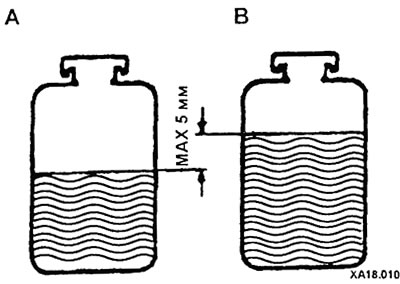When changing the fluid, clean the filter with clean gasoline.
Fill the expansion tank up to the MAX mark.
Raise the vehicle.
Rotate the oil pump pulley.
With the engine turned off, turn the steering wheel sharply from lock to lock several times to force air out of the cylinder.
Pour liquid into the expansion tank up to the MAX mark.
Disconnect the high voltage center wire from the ignition coil.
Turn the starter on and off sharply and at the same time turn the steering wheel 5-6 times to the left and right until it stops (about 15-20 seconds).
While bleeding, add liquid to the compensation tank so that it does not fall below the minimum mark.
ATTENTION: Bleeding of air is carried out when the starter is turned on an idle engine.
Lower the vehicle with the wheels straight ahead.
Connect the high voltage center wire to the ignition coil.
After starting the engine, leave it to idle. Make sure that the fluid level in the compensation tank is constantly at the MAX mark.
With the engine running, turn the steering wheel from lock to lock until no more air bubbles come out of the expansion tank.
Do not hold the steering wheel on the stop for more than 10 seconds.
Add fluid up to the MAX mark. The oil should not be cloudy. If the steering wheel is moved to the left or right, slight changes in the fluid level may occur.
Stop the engine. Repeat the process of bleeding the system if the fluid level has changed by more than 5 mm.
There is still air in the system if the fluid level rises sharply after stopping the engine. Unusual noises in the oil pump and control valve also indicate the presence of air in the system.

A - with the engine running; B - with the engine off.
